To anyone who knows Honiara, Solomon Islands, the arrival is always a sudden immersion into the steamy tropical climate. The international arrivals terminal at Henderson International Airport is not air conditioned. Immigration and customs clearance is a slow, meticulous process with disembarked visitors gradually snaking their way through the arrivals cue to make it to the processing desk. That has not changed. But the first sign of a lot of infrastructure development on northern Guadalcanal is at Henderson Field where a new international terminal is being constructed just east of the existing traditional leaf house-style terminal building. This is long overdue.

The current runway has been resurfaced and the tarmac has been enlarged so multiple planes can park. There are also plans to build a second open v-runway that starts at the Lungga River and diverging outward from the existing runway toward the coastline. A second runway offers aviation transportation redundancy should one runway be flooded or damaged as a result of a natural disaster such as flood or earthquake, both of which recently occurred. The new runway build will take place near Edson’s (Bloody) Ridge and will no doubt require the removal of UXOs and possibly the recovery of human remains from WWII.
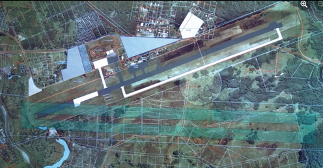
Kukum Highway, the road that connects the airport to Honiara town, is also undergoing extensive work although the majority of the 12 kilometer trip is currently a painful bumpy one while the work proceeds. The road plan includes widening it to 2 lanes each way, creation of pedestrian sidewalk space and installation of a drainage system. The airport project including the Kukum Highway upgrades are being built by the Kitano Construction Company and is funded by JICA and the World Bank. While the completion date for the road and airport upgrades is just before the Pacific Games, these projects also address key transportation critical infrastructure and will serve to build adaptation and resilience in a region that lives with regular natural disasters. Solomon Islands loses roughly US$11 million annually to damage and loss from extreme weather events.
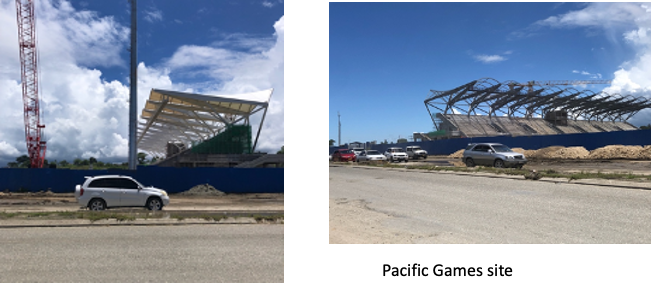 Midway between Henderson Field and Point Cruz is the Pacific Games complex. You cannot miss it. The stadium, the largest by far in the entire Pacific Region, is also the largest structure on the northern coast of Guadalcanal. The site is fenced in but the 2 sided concrete stadium seating can easily be seen above it. When completed the stadium will have seating for 10,000 spectators and 1,000 VIPs. It is being constructed as a gift to the people of Solomon Islands by the People’s Republic of China (PRC). The Chinese state company China Civil Engineering Construction Corporation (CCECC) a subsidiary of the China Railway Construction Company (CRCC) was awarded the construction contract.
Midway between Henderson Field and Point Cruz is the Pacific Games complex. You cannot miss it. The stadium, the largest by far in the entire Pacific Region, is also the largest structure on the northern coast of Guadalcanal. The site is fenced in but the 2 sided concrete stadium seating can easily be seen above it. When completed the stadium will have seating for 10,000 spectators and 1,000 VIPs. It is being constructed as a gift to the people of Solomon Islands by the People’s Republic of China (PRC). The Chinese state company China Civil Engineering Construction Corporation (CCECC) a subsidiary of the China Railway Construction Company (CRCC) was awarded the construction contract.
Within the sprawling sports complex is an aquatic center, a track, tennis courts, a hockey field, a dining hall for athletes and the futsal complex named “Friendship Hall.” Friendship Hall was built by the Indonesian State-owned company PT Wijaya Karya at a cost of US $7.5 million. PM Sogavare, once very outspoken against human rights abuses in West Papua, has asked Indonesia to build two more futsal complexes in the outer provinces. The flags of both Solomon Islands and Indonesia fly outside of Friendship Hall.

The fence around the complex serves the dual purpose of security and “flag flying” with posters of CRCC projects and China Aid logos and accolades. While the media was welcomed to tour the Kitano CC airport renovation project the same has yet to be done for the Pacific Games complex. It remains under tight wraps. During the recent Chefs de Mission meeting for the Pacific Games attendees were given an inside tour but the media was excluded and the sharing of photos was not allowed.
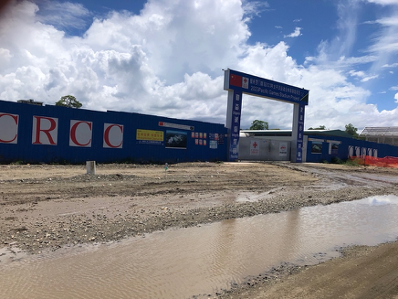
The Chinese embassy is a new addition to Mendana Highway. It is located on the western side of Honiara nearby other major embassies such as the British and New Zealand High Commissions. It is in The Shore building, completed in 2020 by a Chinese development company, and was taken over by the Chinese embassy with modifications including the addition of a high security wall. Like the fence around the sports stadium complex posters of Chinese funded projects are displayed on it. In keeping with strategically prominent and large Chinese supported infrastructure projects the embassy, while handsome, seems oversized for what has been estimated to be a staff of approximately 30 people.

Chinese-Solomon Islands agreements have also been made on health infrastructure development. Medical equipment donated to the National Referral Hospital (NRH) by China Aid, such as ventilators and portable operating theater lights, are stored in the biomedical garage. They will be put to good use in the next few months thanks to the Australian DFAT funded creation of a high acuity care (ICU) medical unit on the existing medical ward. The renovation began in mid-November.
On November 23, 2022 Ambassador Li Ming and Prime Minister Sogavare signed an agreement to proceed with building a 4 story Comprehensive Medical Center on the east side of the NRH campus. When completed it will be the tallest building on the NRH campus. The proposed site is just 20 meters from the coastline, at an elevation of 1.8 meters. NRH desperately needs to be relocated as it is subject to storm surge, flooding and tsunami alerts that require evacuations and disrupt patient care. During my time in Honiara the hospital was hit by a flood and an earthquake with multiple aftershocks. Adding more in-patient facilities to an already highly vulnerable site does not make sense, nor does it offer a long term solution. Despite conversations between leaders in the Ministry of Health and Ambassador Li Ming where it was requested the proposed US$12.5 million Comprehensive Medical Center (CMC) be built on the high ground relocation site selected for NRH that decision was over ruled and construction will proceed at the coastal NRH location.
The CMC will offer cardiac care, renal dialysis and urological care. It will include 8 acute care hospital beds for each specialty service. There are some real tangible benefits to the care that can be provided at this CMC depending upon how the cost of consumables is handled, how local staff training and support will be handled and what care protocols will be used. The staff doctors at NRH only just received information about the CMC just days before the agreement was signed. Input from the staff was not sought in the planning of the project. This top-down approach can negatively impact acceptance of local ownership as well as set the stage for a two-tiered health system that neglects NRH in favor of the CMC.
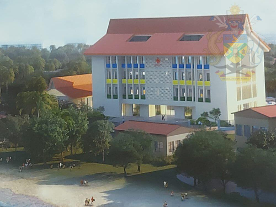
Housing development is being promoted outside of Honiara. Approximately 8 kilometers, or 40 minutes by car west of Point Cruz a new housing development project is under way. Known as the Mamara New Capital City the development provides homes for government public servants. The development agreement was signed in April 2020 between the Solomon Government, the Department of lands (Minister of land and resources) and Mamara Metropolis Pacific Limited (MPPL), a Singapore private investment entity. Over SB$100 million has been spent on it which includes plans for 1200 houses along with shops, schools and coastal access. I found this development to be somewhat reminiscent of the British Solomon Islands Protectorate (BSIP) housing offered to public servants in the 1950s and 1960s. Mamara New Capital City is part of the government’s Public Service Housing Assistance Policy where government employees, such as MPs, can rent to own. There are 3 different house plans to choose from with prices ranging from SB$550,000 (US$ 68,750) to SB$927,000 (US$115,875). The construction is on light weight metal stilts although well inland. There is little room for a traditional food garden due to the high density of houses. Currently approximately one third of the 50 completed houses are occupied. There has been speculation the project was designed to garner political support for the Democratic Coalition Government for Advancement (DCGA) in order to stay in office. But the distance outside of Honiara, the need for a car and the high prices may work against the success for this highly planned city.
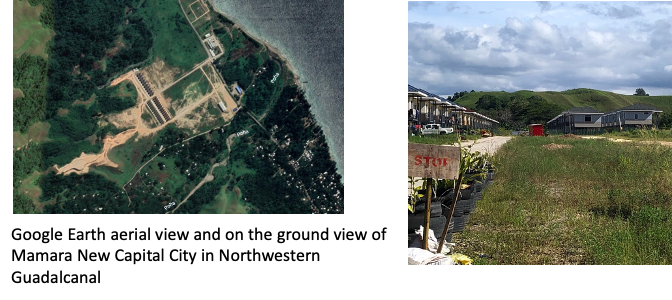 The last trip I made before the pandemic began shutting down the world was to Honiara. Two and a half years later upon returning and resuming our health capacity building partnership with the doctors and nurses at NRH the landscape of the city has changed. China’s economic and political influence is obvious. What is not visible is a US embassy, still stuck in the quagmire of what is the most secure location for it. A modest forward team is on the ground, but no new development projects are being discussed.
The last trip I made before the pandemic began shutting down the world was to Honiara. Two and a half years later upon returning and resuming our health capacity building partnership with the doctors and nurses at NRH the landscape of the city has changed. China’s economic and political influence is obvious. What is not visible is a US embassy, still stuck in the quagmire of what is the most secure location for it. A modest forward team is on the ground, but no new development projects are being discussed.
Interactions with Solomon Islanders who live in Honiara are unchanged. They go about their daily business, are glad to have tourists back and are more than willing to talk about nearly anything including politics and the NRH. The pandemic extracted a significant toll on the small businesses in and around Honiara, especially restaurants. Many have closed. Chinatown, one year on from the riots is still a burnt out shell with some speculating Chinese business owners will not rebuild there. Hints of relocation can be seen along Kukum Highway.
There is no doubt the Pacific Games 2023 will be a shining two weeks for Solomon Islanders, something they should be proud to participate in. It will also serve as a big feather in the cap of Prime Minister Sogavare who has promised to pay the expenses for over 5000 athletes and officials from 24 countries to attend. But what happens when the games end? Will the games generate profit or will there be economic losses that will worsen the budgets of other sectors through fungibility of monies? Will the sports complex become a white elephant?
The overarching feeling from all of these large projects is “visibility.” Showcasing non-critical infrastructure, while it provides temporary pride, will not improve the health and education of the average Solomon Islander. None of these projects will definitively improve access to medical care or fix the worsening problem of critical medical supply shortages at the National Referral Hospital (NRH) and the outer island provincial hospitals and clinics. No fancy multistory building can do that. The government must prioritize it, invest in it and the people must demand it. Medications such as intravenous antibiotics will continue to run out, disrupting patient care, including surgeries, and result in unnecessary deaths. The new Sports Complex will not train the government to pay their medical supply bills in arrears in a timely fashion. Management by crisis will continue. Perhaps after the Pacific Games end the public will see the priorities that have been set by the current Solomon Islands government.
How many more extreme weather event blows can the National Referral Hospital take before medical services are completely disrupted? After the recent flood at NRH, during which doctors and nurses were mopping the floors of the operating theater and medical ward a remark was made: “perhaps we should put a roof on the stadium and move NRH over there after the games.”